From Ashes to Empire: The Untold Rise of Louis Vuitton
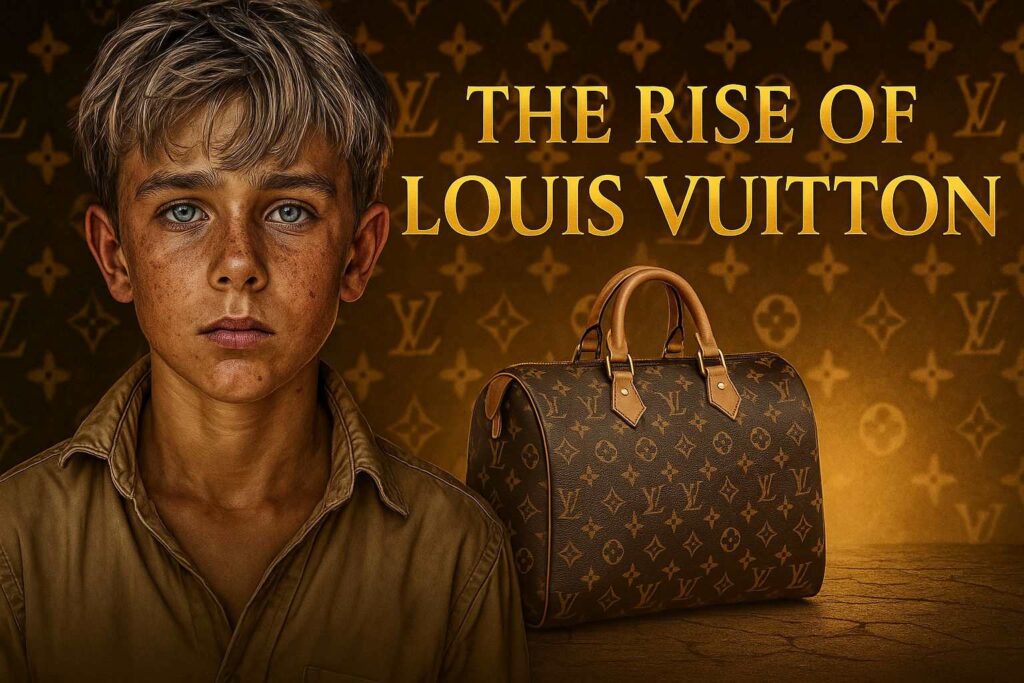
In the annals of luxury and craftsmanship, few names resonate with the enduring power and prestige of a certain iconic brand. Its journey, however, began not in the gilded salons of high society, but in the humble, often harsh, realities of 19th-century France. This is the story of a visionary, a young boy who, against all odds, embarked on a remarkable odyssey that would ultimately redefine travel, inspire innovation, and establish a global empire built on the principles of unparalleled quality and aspirational design. His tale is a testament to resilience, ingenuity, and the transformative power of a singular idea, proving that true luxury is not merely about opulence, but about a legacy forged in dedication and an unwavering commitment to excellence.
The Unlikely Genesis of a Legend
A. A Journey Forged in Adversity: The Early Years
The narrative begins in a small French village, where a boy named Louis was born in 1821. His early life was marked by hardship; his father, a farmer, struggled to make ends meet, and his mother, a hat maker, contributed what she could to the family’s meager income. At a tender age, circumstances forced Louis to abandon his studies and assist his father in the fields. The passing of his mother when he was just ten years old, followed by the mistreatment from his stepmother, cast a long shadow over his youth.

Enduring three years of this difficult existence, compounded by scarcity, Louis, at the age of thirteen, made a momentous decision. Under the cloak of night, without a word to anyone, he set out for Paris. This was no ordinary journey; with no money or resources, he traversed the 292 miles on foot, stopping in villages along the way to exchange small jobs for sustenance. He slept in forests when shelter was unavailable and often went hungry. This arduous trek, a testament to his nascent determination, spanned two years, culminating in his arrival in Paris in 1837.
B. The Apprenticeship of a Master Craftsman
Upon reaching the bustling metropolis, Louis’s immediate priority was survival. Fortuitously, the burgeoning railway system in Paris had sparked a surge in travel, creating ademand for specialized luggage boxes. A skilled craftsman, Monsieur Maréchal, who specialized in the creation of such boxes, was seeking an apprentice. Louis, seizing the opportunity, approached Maréchal and was hired.
For sixteen formative years, Louis diligently honed his craft under Maréchal’s tutelage, perfecting his skills with an unwavering dedication. His exceptional artistry soon garnered recognition, and customers began specifically requesting trunks fashioned by his hands, a clear indication of his growing reputation. This period of apprenticeship was pivotal, transforming a determined young runaway into a master artisan whose name would soon become synonymous with luxury travel.
Revolutionizing Travel: Innovation and Ingenuity
A. The Dawn of Modern Luggage: Flat-Top Trunks
A pivotal moment arrived in 1852 when Empress Eugénie, wife of Emperor Napoleon III, captivated by his exceptional work, appointed Louis as her personal box maker. This prestigious role significantly elevated his standing, transitioning him from a mere craftsman to a purveyor of luxury goods for the elite and royal clientele. With his reputation solidified, Louis married in 1854 and, shortly thereafter, established his own shop on Rue Neuve-des- Capucines, a remarkable achievement for someone who had once been homeless. Initially, he relied on suppliers for production, but a decline in quality prompted him to relocate in 1858 to Rue du Rocher, 76, where he personally oversaw trunk production, ensuring the highest standards.
Louis possessed an acute eye for detail, a trait that led him to identify a critical flaw in the prevailing travel luggage of the era. Before the advent of trains, horse carriages were the primary mode of transport, and luggage boxes typically featured dome-shaped lids to prevent water accumulation. However, these designs were heavy and cumbersome. With the rise of train travel, these same dome-shaped boxes proved impractical, consuming excessive space and being difficult to handle. Louis recognized this inefficiency and introduced a revolutionary solution: the flat-top rectangular trunk, famously known as the steamer trunk.
Unlike traditional pigskin trunks, which were prone to cracking, Louis utilized a durable, lightweight fabric called trianon canvas, predominantly in gray. This innovative material enhanced both the sturdiness and aesthetic appeal of his creations. The rectangular form factor allowed for efficient stacking, optimizing space and significantly improving convenience for travelers. Wealthy individuals, who frequently embarked on journeys, quickly embraced these modern, clean-lined trunks, which rapidly gained popularity among the elite.

B. Beyond the Trunk: Anticipating the Needs of the Elite
What might appear as a simple design modification—flattening a dome—was, in fact, a groundbreaking innovation that fundamentally transformed the perception and utility of luggage. This ingenious idea originated from a once-homeless, uneducated young man. By 1859, the demand for these flat-top trunks had surged. The brand astutely targeted affluent individuals, understanding that by simplifying and enhancing their travel experience, they would be willing to invest significantly. To cater to the discerning needs of this clientele, the brand began offering customized trunks. In an era where all belongings were typically packed into a single trunk, leading to disorganization, the brand introduced compartments and segments, making their trunks remarkably more practical and contemporary.
Furthermore, observing the limited use of handbags by women due to their perceived weight and inelegance, the brand designed lightweight and stylish canvas handbags, which dramatically increased their demand and quickly became a popular trend among the wealthy. These creations were seen as pioneering inventions, for which the affluent were prepared to pay any price. In recognition of this innovative spirit, the brand was awarded a bronze medal at the Paris Universal Exhibition during the World’s Fair in 1867.
The Crucible of Conflict and Resurgence
A. War and Ruin: A Test of Resilience
Two years later, in 1869, the opening of the Suez Canal marked a significant global event, revolutionizing trade and travel. During this period, the brand’s travel bags and trunks garnered considerable international attention. The elite of France brought these stylish items to Paris, propelling the brand into the global spotlight. Its growing renown attracted prominent figures from around the world, who journeyed to France specifically to acquire its products. Among them was the Viceroy of Egypt, who, deeply impressed, bestowed upon the brand an official document recognizing it as a royal family supplier.
This prestigious acknowledgment served as irrefutable proof of the brand’s exceptional craftsmanship, solidifying its association with royalty and significantly boosting its international reputation.The brand even created specialized trunks for various purposes, including the storage of clothes, swords, and turbans, and even tailored solutions for polo outfits and cigarette drying, further cementing its status among the powerful and wealthy.The brand’s popularity soared, as products favored by the elite naturally became aspirational for the middle and lower classes, who believed that owning such items would elevate their own status.
However, 1870 brought immense challenges with the outbreak of the Franco-Prussian War. The founder was forced to abandon his shop and belongings in Paris, relocating to Aisne, a town outside the capital, where thousands sought refuge in camps. During this tumultuous period, the brand’s workshops were destroyed, and its tools, canvas, and inventory were stolen. By the war’s end in 1871, the founder had lost everything, effectively starting over from scratch.
B. Rebuilding from Ashes: Strategic Vision
Despite the devastation, the war inadvertently presented a unique opportunity. Property prices plummeted, and prime, strategically located spaces became available at remarkably low costs. Few possessed the financial means to invest, but the founder, having retained some savings, was among the fortunate few. Recognizing this rare chance, he acquired a shop in the Opera district of Paris, near Louis Scribe Street. This location proved highly advantageous, situated close to the railway station, the Grand Hotel, and Hotel Scribe, ensuring a constant flow of travelers. With this astute move, the business rapidly revived, demonstrating the founder’s unwavering resilience and strategic foresight.
In the years that followed, the founder’s son, George, returned from his studies abroad. George, with a keen business acumen, persuaded his father to expand the brand’s international presence by opening a store in London, convinced that the brand would flourish there. The founder agreed, and in 1885, they jointly launched the first store outside France, located at 289 Oxford Street, London. This marked a significant milestone, establishing the brand’s global footprint and setting the stage for future international expansion.

Safeguarding a Legacy: The Birth of an Icon
A. The Challenge of Imitation: Counterfeiting
As with many successful brands, the burgeoning popularity of the brand brought with it a common challenge: counterfeiting. Fake products began to inundate the market, significantly impacting the business. While initial attempts were made to address this issue, they proved largely ineffective against the rising tide of imitation. To combat this growing problem, George, the founder’s son, proposed a radical solution: to integrate a unique, unreproducible element into their products. At the time, the brand’s bags, though functional, lacked a distinctive feature that would deter counterfeiters.
B. The Unbreakable Seal: A Revolutionary Locking System
George and his father turned their attention to the minutiae, focusing on an often- overlooked yet critical component: the locking system. In an era when wealthy travelers frequently carried valuable paintings and other precious items in their trunks, theft was a pervasive concern. Despite the use of large, seemingly robust locks, thieves could easily breach them, causing considerable distress. To address this vulnerability, the brand conceived and developed the revolutionary Tumbler Lock.
This innovative system featured a multi-pin tumbler mechanism, where each pin had to be precisely aligned to unlock, rendering it significantly more secure and challenging for thieves to manipulate. George and his father dedicated themselves to perfecting this groundbreaking invention, recognizing its unprecedented nature. To protect their creation, they promptly secured a patent for the lock.To effectively market this new security feature, George employed a clever and audacious strategy.

He published an article on the front page of a prominent newspaper, issuing a public challenge to the world-renowned escape artist, Harry Houdini, daring him to crack the brand’s new lock. Houdini, notably, declined the challenge. This single, bold move transformed the brand’s locking system into a highly sought-after solution for a major market need, leading to an immediate surge in demand for their products. For affluent individuals traveling with valuables, acquiring a bag equipped with this seemingly impenetrable lock became a necessity, regardless of the price.
Consequently, the wealthy gravitated towards the brand, confident in the security of their possessions. Moreover, counterfeiters found it impossible to replicate the intricate lock, making it effortless for discerning buyers to distinguish genuine products from fakes, further fueling demand. In recognition of this significant innovation, the brand was awarded a gold medal at the Paris World’s Fair in 1889.
C. The Power of Distinction: Branding and Aspiration
Following this success, the brand shifted its focus beyond mere functionality, concentrating on enhancing its aspirational value. They meticulously addressed the nuanced needs of the wealthy, understanding that this approach would significantly boost profitability. The brand introduced several seemingly minor steps that, at the time, were truly groundbreaking. For instance, they created the first-ever product catalog, available in both French and English.
While commonplace today, this was a novel concept then, demonstrating the brand’s foresight in catering to its clientele’s unspoken desires. The brand was, in essence, solving problems for the wealthy that they hadn’t even realized existed. This meticulous attention to detail and proactive innovation solidified the brand’s position as a leader in luxury goods, setting a new standard for exclusivity and desirability.
A New Era: Evolution and Enduring Influence
A. Passing the Torch: A Son’s Vision
Tragically, in 1892, the same year the groundbreaking catalog was launched, the visionary founder passed away from brain cancer. With his passing, his son, George, who had been intimately involved in the business and shared a deep bond with his father, assumed the responsibilities of leading the brand. George was resolute in his determination to honor his father’s legacy and propel the brand to even greater heights. Just a year after his father’s death, in 1893, George embarked on a strategic mission to introduce the brand to the American market, showcasing its exquisite creations at the World’s Fair in Chicago, USA.
During his time in the United States, George’s astute business acumen led him to secure prominent clients, including the influential J.P. Morgan and his family. The very next day, he successfully convinced John Wanamaker, the esteemed owner of a prestigious department store, to feature the brand’s bags in his establishment. This pivotal move marked the brand’s official introduction and entry into the lucrative American market.
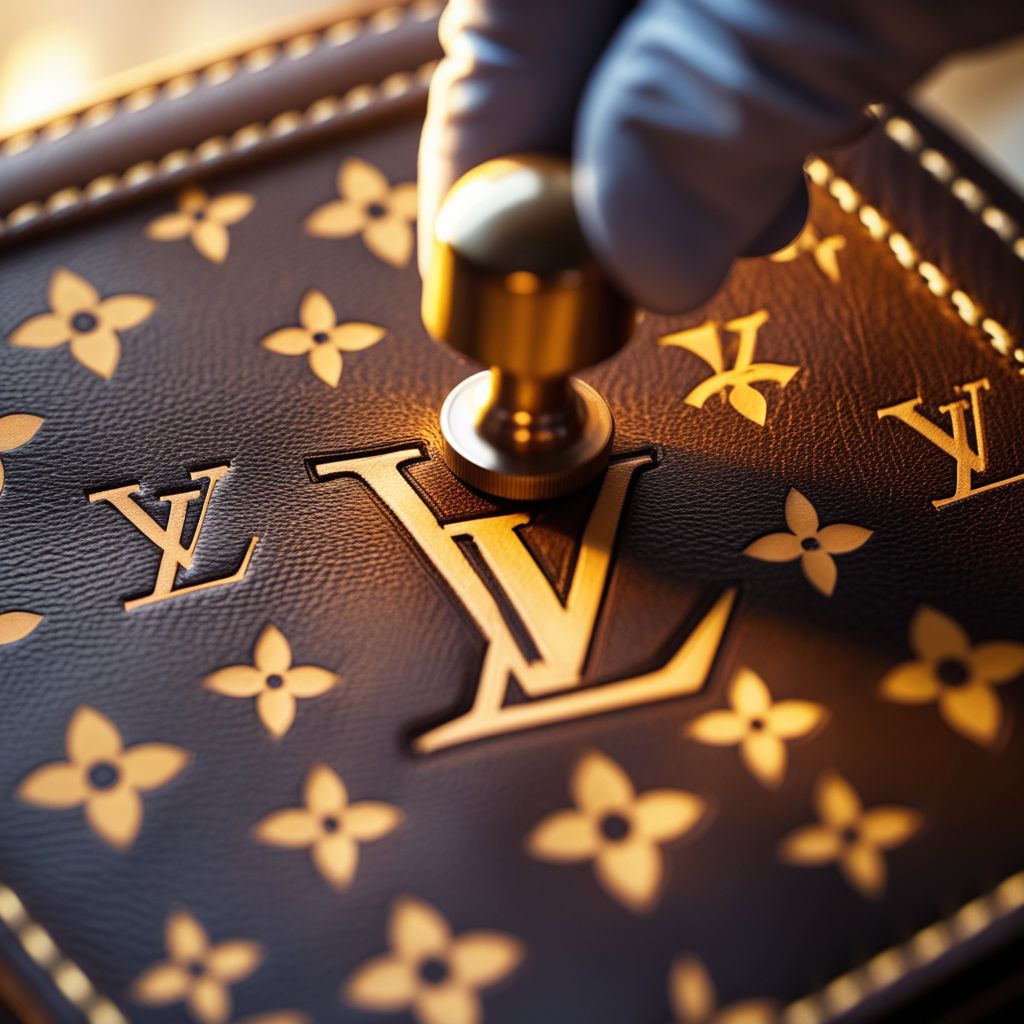
B. The Monogram: A Symbol of Uniqueness
Following this successful expansion, George dedicated his efforts to establishing a unique and instantly recognizable brand recall value for the bags. In 1896, he unveiled a revolutionary monogrammed canvas design. This distinctive pattern meticulouslyincorporated four systematic elements: stylized leaves, flowers, and the iconic initials “LV.” The inclusion of the initials was a deliberate homage to a tradition where painters signed their masterpieces with their initials.
George drew inspiration from this artistic practice, imbuing every product with the initials “L” and “V” as a lasting tribute to his father’s memory. As seen today, these initials remain a hallmark of the brand’s identity. The design itself was influenced by intricate Japanese floral motifs, which are renowned for their harmonious and beautiful patterns. This new monogrammed canvas design not only provided unparalleled brand recognition but also offered a significant advantage in the ongoing battle against counterfeiting. George meticulously crafted the design with such precision that any imitation could be easily identified.
Despite the higher production costs, George steadfastly insisted that every bag be meticulously handmade, eschewing machine production. While other companies embraced mass production, George’s unwavering commitment to handcrafted perfection ensured that each piece was flawless.
This dedication to detail created a clear distinction between authentic and counterfeit products. Counterfeiters struggled to replicate the intricate handmade process, and the inherent production costs made it economically unfeasible for them to copy the bags effectively. This is how the world-famous design came into being. George’s innovative design was officially trademarked by the National Office of Industrial Property on March 21, 1905. Initially, a gray design was utilized, followed by variations featuring brown and dark brown stripes, eventually evolving into the universally recognized design we see today.
The Unyielding Spirit of Innovation
A. Adapting to Change: Navigating Global Shifts
After George’s passing in 1936, his son, Gaston Louis, assumed leadership of the business. However, his tenure coincided with the tumultuous onset of the Second World War, a period that significantly impacted the brand’s sales. During the war, with the occupation of France, many businesses closed in protest. Yet, the brand did not join this boycott, a decision that has been a subject of historical discussion. Despite the challenges of wartime, the brand continued to adapt, demonstrating its inherent resilience and ability to navigate profound global shifts. This period, though difficult, underscored the brand’s capacity for survival and its deep-rooted commitment to its craft, even in the face of unprecedented adversity.
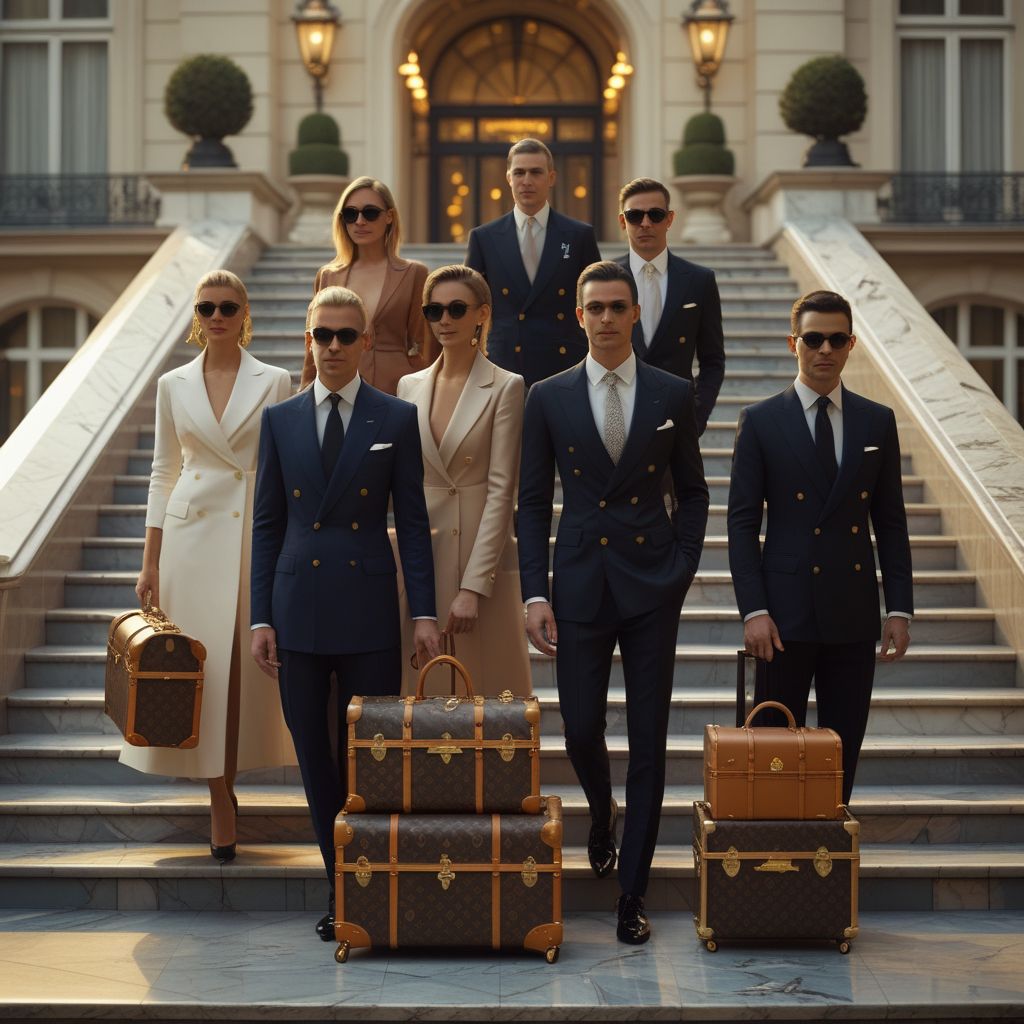
B. The Future of a Heritage: Timelessness and Modernity
The brand’s history is a continuous narrative of innovation, not just in product design but in its approach to business and its understanding of the evolving needs of its clientele. From the revolutionary flat-top trunk to the intricate locking system and the iconic monogram, each step has been a testament to an unyielding spirit of progress. This forward-thinking approach has allowed the brand to maintain its relevance and desirability across generations. It has consistently blended its rich heritage with a keen awareness of contemporary trends, ensuring that its creations remain both timeless and modern.
The ability to adapt, while staying true to its foundational principles of quality and exclusivity, has been a cornerstone of its enduring success. The brand continues to push boundaries, exploring new materials, designs, and collaborations, all while preserving the artisanal craftsmanship that defines its very essence. This dynamic interplay between tradition and innovation ensures that the brand’s legacy is not merely preserved but actively evolves, securing its place in the future of luxury.
The Allure of Exclusivity: Craftsmanship and Value
A. The Art of Handmade Perfection
One of the most defining characteristics of the brand, and a key factor in its enduring allure, is its unwavering commitment to handmade perfection. In an age of mass production, the brand has steadfastly maintained its dedication to artisanal craftsmanship. Each product, from its inception to its final stitch, is a testament to the skill and precision of its artisans.This meticulous attention to detail ensures that every item is not merely a product, but a work of art, imbued with a level of quality that machine production simply cannot replicate.
This commitment to the handmade process not only elevates the aesthetic and tactile qualities of the products but also serves as a powerful deterrent to counterfeiting. The complexity and inherent cost of replicating such intricate, handcrafted items make it exceedingly difficult for imitators to produce convincing fakes. This dedication to authenticity and superior craftsmanship reinforces the brand’s reputation for exclusivity and unparalleled quality.
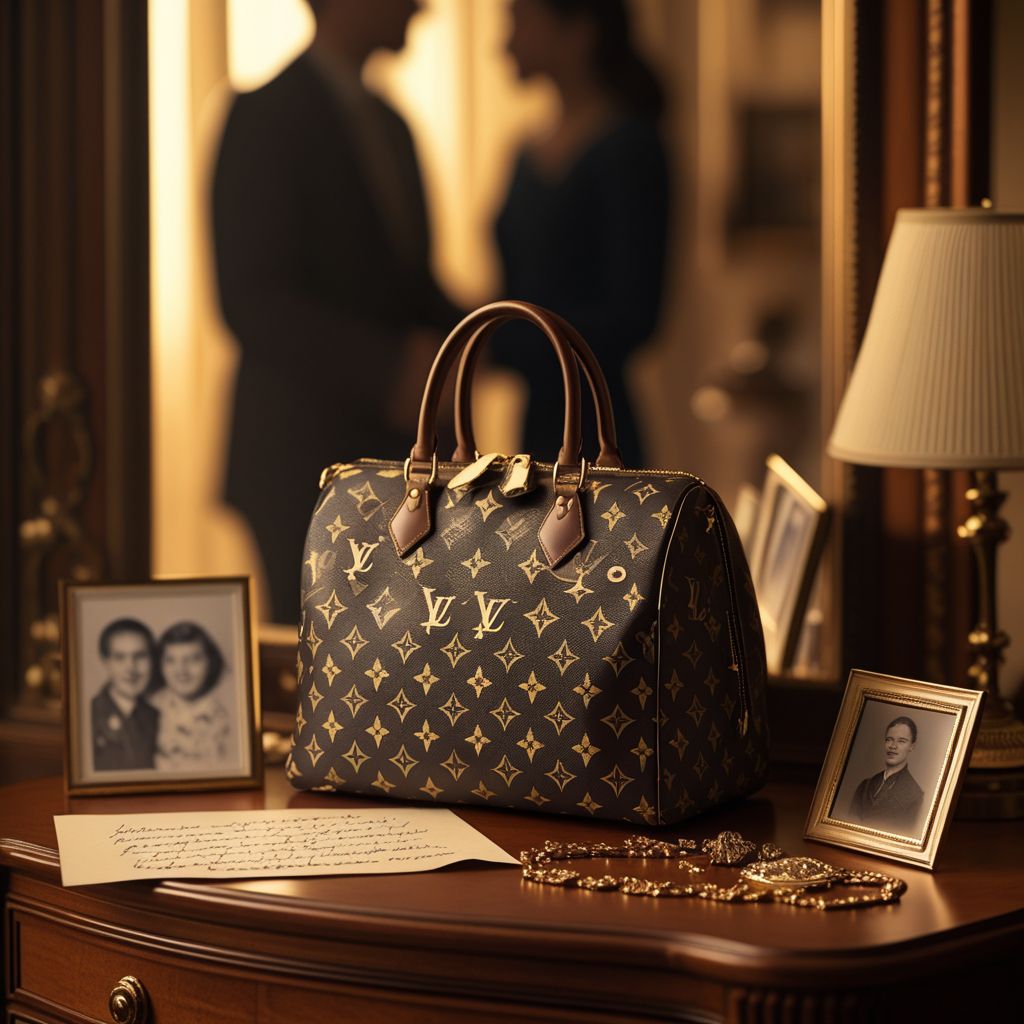
B. More Than an Accessory: An Investment in Legacy
The value proposition of the brand extends far beyond mere utility or fleeting fashion trends. Its products are often considered investments, not just in terms of monetary value, but as pieces of a rich legacy. The brand has cultivated an image where owning its creations signifies a connection to a heritage of innovation, resilience, and uncompromising quality. This perception is reinforced by the durability and timeless design of its products, which are often passed down through generations, acquiring sentimental value and becoming cherished heirlooms.
💡 Also read:
Why 10% of Americans Believe the Earth Is Flat — And The Reason Is Wild
The narrative of the brand, from its humble beginnings to its global prominence, is intrinsically woven into each item, making it more than just an accessory; it is a tangible piece of history, a symbol of aspiration, and a testament to the enduring power of a vision brought to life through dedication and artistry. This deep-seated value, transcending mere material worth, is what truly captivates and retains its discerning clientele.
The Enduring Narrative of a Global Phenomenon
A. From Poverty to Prestige: A Testament to Vision
The story of this iconic brand is a compelling narrative of transformation, a journey from the depths of poverty to the pinnacle of global prestige. It is a testament to the extraordinary vision and unwavering determination of its founder, a young boy who, through sheer will and ingenuity, carved out a path that would redefine an entire industry. His early struggles, his arduous journey to Paris, and his relentless pursuit of mastery laid the foundation for a legacy that continues to inspire.
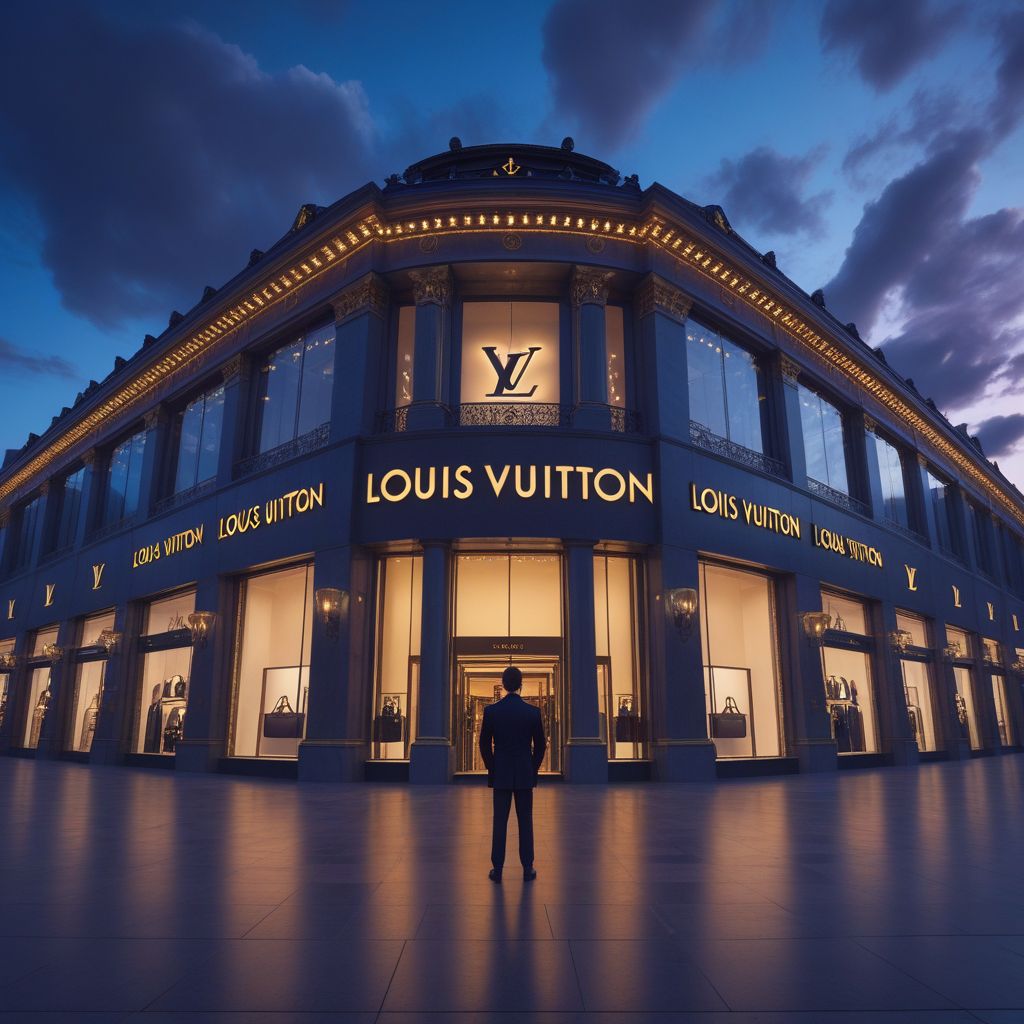
The brand’s evolution, marked by groundbreaking innovations in travel, its resilience in the face of adversity, and its strategic response to challenges like counterfeiting, all underscore a profound commitment to excellence and a forward-thinking approach that has consistently set it apart.
B. The Unseen Value: Beyond the Material
Ultimately, the enduring appeal of this brand lies not just in the exquisite craftsmanship or the luxurious materials of its products, but in the unseen value they represent. Each item carries with it the echoes of a remarkable history, a narrative of innovation, aspiration, and an unyielding pursuit of perfection. It is a brand that has consistently understood and anticipated the desires of its clientele, offering not just goods, but symbols of status, security, and a connection to a rich heritage.
In a world constantly in flux, the brand stands as a beacon of timeless elegance and enduring quality, a true global phenomenon whose story continues to captivate and inspire, proving that true luxury is indeed a legacy built on vision, resilience, and an unwavering dedication to the art of creation.


